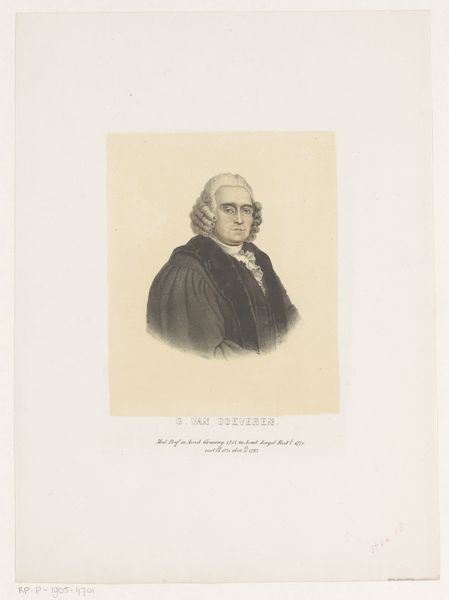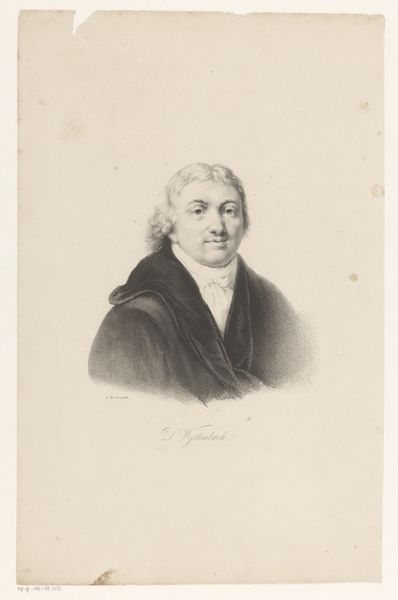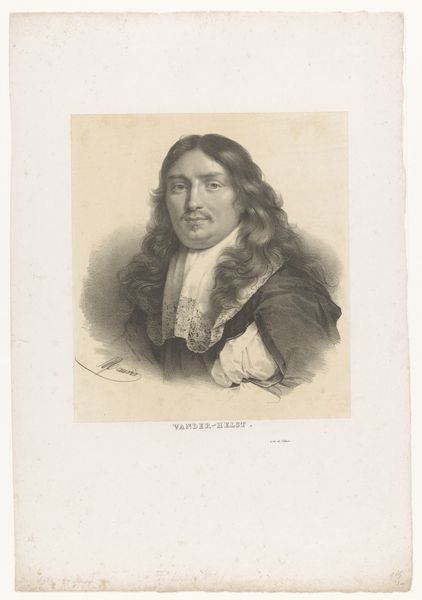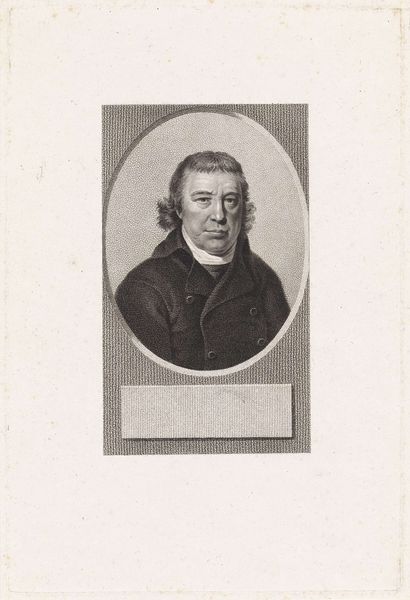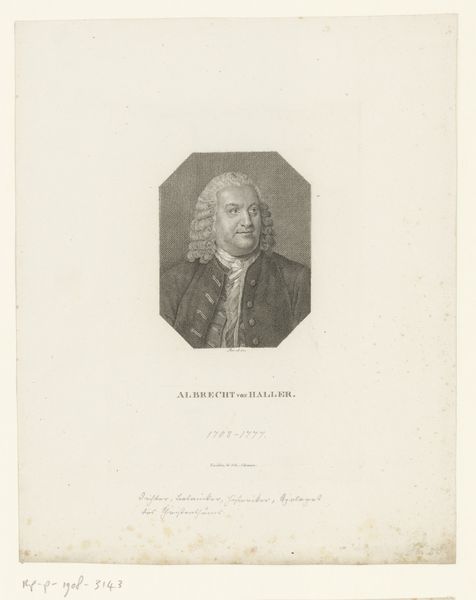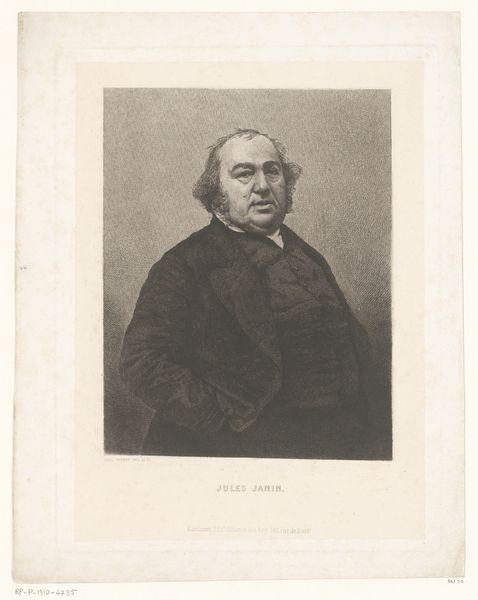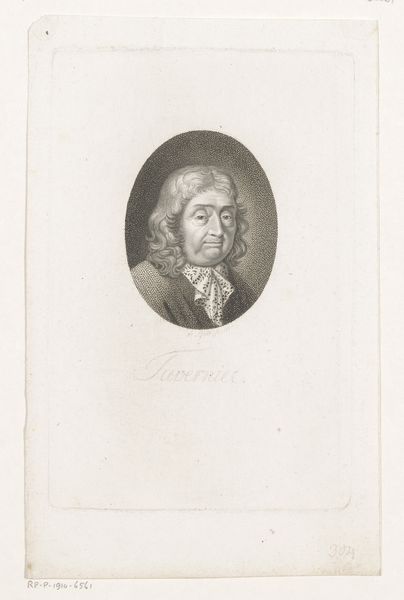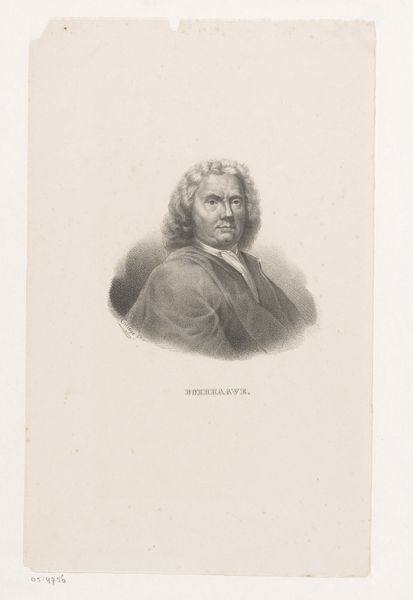
print, engraving
#
portrait
# print
#
engraving
#
realism
Dimensions: height 435 mm, width 295 mm
Copyright: Rijks Museum: Open Domain
Editor: Here we have a print titled "Portrait of Samuel van Beuningen," made between 1809 and 1867 by Jan Lodewijk Jonxis. It's an engraving. I’m struck by the directness of his gaze – it feels very serious. What do you see in this portrait? Curator: Immediately, I'm drawn to the subject's attire, the dark coat, the white cravat, and the wig. These are powerful symbols. Don't you agree? Editor: Yes, they indicate a certain status, maybe scholarly or religious. Curator: Precisely. They evoke images of enlightenment philosophers or religious leaders of the period. His steady gaze reinforces that, as you noticed. These weren’t merely aesthetic choices, they reflect core values of his identity. But why commission an engraving, rather than a painting? What connotations does *that* medium bring? Editor: Perhaps prints were more accessible, and therefore served to spread his image and, by extension, his values, more widely. Curator: Exactly! Engravings allow for reproduction, democratizing the image. It speaks to a desire to participate in a broader discourse, to embed himself in the collective memory. Look also at how the light is concentrated on his face. He's not just Samuel van Beuningen, he represents an *idea*. Editor: That’s fascinating; I hadn’t considered the social implications of the medium itself. Thanks, this has changed how I look at portraits! Curator: It is through understanding these embedded visual cues that images live beyond their immediate context and enter the ongoing cultural conversation.
Comments
No comments
Be the first to comment and join the conversation on the ultimate creative platform.


